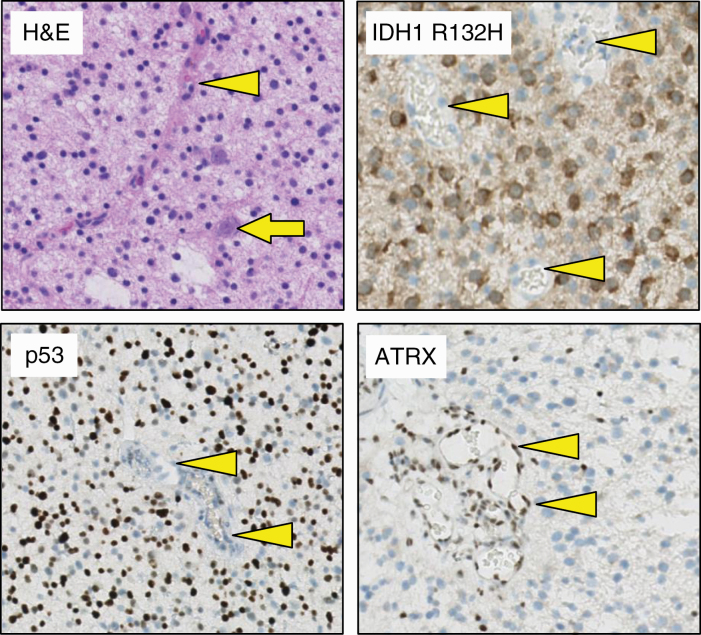Figure 2.
Immunohistochemical surrogate markers enabling discrimination of astrocytoma, isocitrate dehydrogenase (IDH)-mutant from oligodendroglioma, IDH mutant. Hematoxylin-eosin–stained section of a tumor in a 52-year-old man reveals a diffuse, histologically low-grade glioma (preexistent neuron indicated by arrow). Using immunohistochemistry, this tumor can readily be characterized as IDH-mutant (tumor cells positive for IDH1 R132H mutant protein). In addition, because the tumor cell nuclei are strongly and extensively positive for p53 but negative for ATRX, immunohistochemistry allows for designating this tumor as astrocytoma, IDH-mutant (and discarding the diagnosis oligodendroglioma, IDH-mutant and 1p/19q-codeleted). The tumor microvasculature (indicated by arrowheads) serves as an internal control for the immunohistochemical stains (negative for IDH R132H–mutant protein and p53, positive for ATRX).

